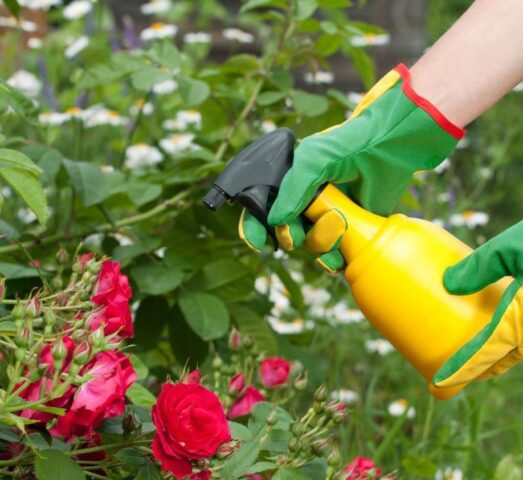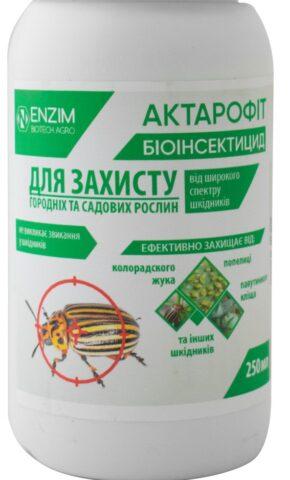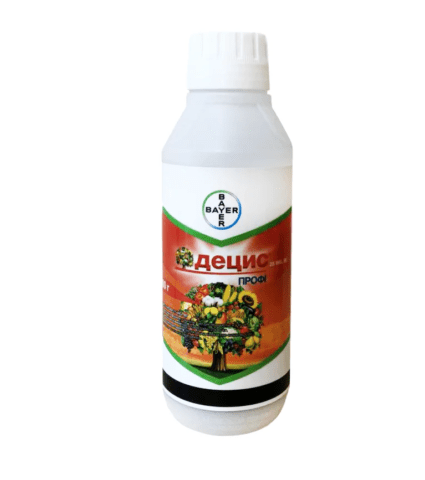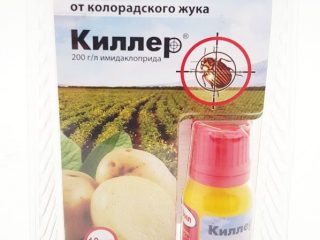Content
Caterpillars on roses can cause a lot of damage because they are voracious and prolific. The appearance of pests can be detected at the beginning of summer by numerous holes in the foliage, wilting of stems, and also by chewed petals. As a result, flowering is disrupted and the bush looks less decorative. Chemicals and folk remedies are used for treatment.
Description of green caterpillars on roses with photos
Most often, green caterpillars settle on roses. Other pests also attack bushes:
- The roseate leaf roller is a butterfly with blackish-green caterpillars. They damage mainly young leaves, buds and branches. As a result, the foliage becomes deformed and curls into a cigar shape. To combat it, it is recommended to collect pests by hand, and then treat them with infusions of tobacco, garlic, and onions. Bacterial insecticides are also used.
- The roseate variable sawfly (also called the false caterpillar) is a fairly large orange-brown caterpillar.In spring, it lays eggs in leaf axils and feeds on plant juices. It is quite difficult to detect, so you need to pay attention to indirect signs - withering of the bush and young shoots.
- The development of pests begins in the spring. At this time, you can notice small butterflies with a wingspan of up to 2 cm. They appear when the daytime temperature approaches +15 degrees and above. The flight lasts two weeks, while the insects are practically invisible because they are nocturnal.
Already in early May, female caterpillars lay eggs in the leaf axils of rose bushes. The larvae curl into tubes and become overgrown with cobwebs, which prevent them from falling. In June, the caterpillars pupate, and at the end of summer they produce new eggs, which overwinter in the foliage, on the forks of shoots, and also in the surface layer of soil.
Green caterpillars on roses can be detected visually, as well as by the wilting of the upper parts of the shoots. Outwardly, everything looks as if the bushes do not have enough water. If you break the stem, you can see the larvae on the cut. They feed on young leaves, nibble them partially or completely, almost to the cuttings.
You should also pay attention to the following signs:
- Massive appearance of small holes on the leaves.
- The buds are missing stamens and pistils - a clear sign of an invasion.
- The petals are chewed.
- The leaves and buds are covered with a layer of cobwebs.
- The bush looks less attractive compared to healthy specimens.
Reasons for appearance
Caterpillars that damage roses are common in all temperate climate zones. Their invasion depends on weather conditions. If it is warm and humid and the winter is relatively mild, there will be many more pests.
There are certain reasons that can provoke an invasion of caterpillars:
- excessive watering;
- lack of preventive treatments;
- unharvested foliage and other plant remains of roses;
- no loosening or digging of the root zone in the fall.
You can prevent the appearance of insects. To do this, you need to provide proper care, as well as plant seedlings of rose varieties that are resistant to pests.
What harm do they cause?
Caterpillars cause quite a lot of damage. They are prolific and voracious, feeding on plant juices and weakening plants. This leads to a number of consequences:
- illness with infections;
- loss of decorativeness;
- loss of leaves and young shoots;
- violation of flowering - smaller and paler inflorescences appear.
Caterpillars literally eat roses. And if urgent measures are not taken, the bush can become severely weakened and even die.

Pests can destroy a significant portion of the leaves
Chemical preparations for caterpillars on roses
The most effective way to protect roses from caterpillars is to treat them with chemicals. Among the most effective drugs are the following:
- "Aktofit" gives good results in hot weather. At the same time, it is completely washed away by rain, so treatment should be planned in the absence of precipitation for 2-3 days.
- "Actarofit" is a biological insecticide that affects the nervous system of caterpillars. To obtain a working solution, dissolve 10 ml in five liters of water. The drug can only be stored at positive temperatures, otherwise the active substance will be destroyed.
- “Bitoxibacillin” is a universal drug that acts on caterpillars at different stages of development. Use in moderately warm weather - in the heat (30 degrees and above) the product does not work.
- “Bankol” - used for processing during the hot period. Leads to the complete death of caterpillars within 3-4 days.It is used sparingly - it is enough to dissolve 5 g in 10 liters of water.
- "Decis Profi" is a drug that effectively destroys caterpillars. May be addictive. Therefore, for better results, it is recommended to alternate with other insecticides.
- "Calypso" is a systemic agent. Particularly effective in the fight against leafworm caterpillars. At the same time, it is more expensive than some other drugs.
- "Aktara" is a universal insecticide that has a detrimental effect on insects even in rainy weather. May be addictive. It is recommended to alternate it with other means.
- "Karbofos" is a drug for the destruction of larvae, caterpillars and butterflies. It is highly toxic, so treatment is carried out only with a mask and gloves. It is advisable to use glasses and special clothing. Consumption rate: 5 ml per 10 liters of water.
How to treat roses against green caterpillars using folk remedies
If green caterpillars appear on roses, you can fight them using folk remedies. Experienced gardeners advise combining chemicals with homemade solutions. Folk remedies can also be used to prevent pests.

Roses are processed late in the evening in dry and windless weather.
Mustard powder
You can buy dry mustard powder at the pharmacy and scatter it directly over the flowerbed in small quantities (powder the surface). You can also prepare an infusion by taking 100 g of powder per 10 liters. Leave for two days, filter, then add 2-3 tablespoons of laundry soap shavings. Mix thoroughly and start spraying.
Ash
This product is used not only to kill caterpillars on roses, but also as a natural fertilizer. The application is the same as in the case of mustard.You can sprinkle the powder on the flowerbed and then water it generously. Another option is to steep 200 g of ash in a standard bucket of water (10 l) during the day and carry out foliar treatment.
Entering the roots of the plant, the ash supplies it with nutrients in fairly high concentrations. Due to this, the juices become bitter and the caterpillars cannot feed. If you spray all the bushes, you can doom the pests to death.
Sagebrush
You can spray roses against caterpillars with wormwood infusion. Despite the fact that the plant is a weed, it provides great benefits in pest control. To prepare the infusion, take 1 kg of wormwood and pour 3 liters of water into it, then bring to a boil and cook over low heat for about 20 minutes. Cool, filter and begin processing.
The decoction turns out to be quite concentrated, so it can be diluted to five liters. For a standard 10 liter bucket of water, take 2 kg of fresh crushed wormwood.
Burdock solution
Another weed that grows in abundance near summer cottages and in vegetable gardens. To combat caterpillars on roses, take only burdock leaves, chop them and fill the bucket to a third. Fill with water to the top and leave for 3-4 days. After this, they filter, restore the volume to 10 liters and begin to spray the bushes.
Nightshade
This is one of the most effective remedies against caterpillars on roses. To prepare the infusion, take the leaves, grind them and measure out 5 kg. Pour a bucket of water and cook at low boil for four hours. Then filter and restore the volume to 10 liters. The resulting liquid is used for total spraying of roses and other plants.

A strong infusion of nightshade allows you to destroy caterpillars of various species
Laundry soap
You can spray roses against green caterpillars with a solution of laundry soap.Take a block and grate it on a fine grater. In a regular bucket of water, it is enough to dissolve 3 tbsp. l. (this is approximately 50 g). It is not necessary to insist - you just need to mix thoroughly until completely dissolved, and then start spraying the roses.
Garlic
To treat plants against caterpillars, it is recommended to use both cloves and fresh garlic greens. The raw materials are crushed, 250 g are taken and infused in a bucket for 24 hours. After this, filter and start spraying. The work is planned for late evening, and the weather should be calm and dry.
Tobacco
Another effective recipe against caterpillars on roses is tobacco dust. It also allows you to get rid of aphids, spider mites and other dangerous pests. It is recommended to sprinkle the soil with tobacco in an amount of 50 g per 1 m2. You can also take a glass of dust 200 g, pour 1 liter of hot water and leave for a day. After this, the solution is filtered and brought to a total volume of 10 liters, and then processing begins.
Nettle
To combat caterpillars on roses, chop the leaves and stems of nettle, take 3-4 kg and infuse it in a bucket of water. You need to wait about a day, avoiding fermentation. Then strain, bring to 10 liters and start spraying the bushes.
Caterpillar-resistant roses
In recent years, gardeners have managed to develop several varieties of roses that are resistant to caterpillars: Angela, Freesia, Leonardo da Vinci, Westerland, Sympathy, Schneewithchen, New Doun, Don Juan.

Sympathy is one of the varieties of roses that are resistant to caterpillars.
Protecting roses from caterpillars
Every year care should be taken to prevent the infestation of caterpillars on roses. Experienced gardeners recommend following the following preventive measures:
- Hang butterfly traps around the garden - they are the ones that produce caterpillars, which then feed on plant juices.
- On the eve of the buds opening, carefully inspect the stems. If necessary, destroy clutches with eggs.
- Carry out preventive treatments every spring.
- On the eve of the opening of the buds, spray with drugs such as Bifenthrin or Nitrofen.
- In the fall, remove foliage, branches and burn them, and also dig up the surface layer of soil, and then lay mulch for the winter.
Conclusion
Caterpillars on roses can cause great damage. Because of them, plants bloom poorly and wither. The appearance of pests can provoke fungal and bacterial infections, due to which the bushes will die. Therefore, it is necessary to monitor prevention, and when the first signs of an invasion appear, immediately treat the plants with folk remedies or chemicals.


















